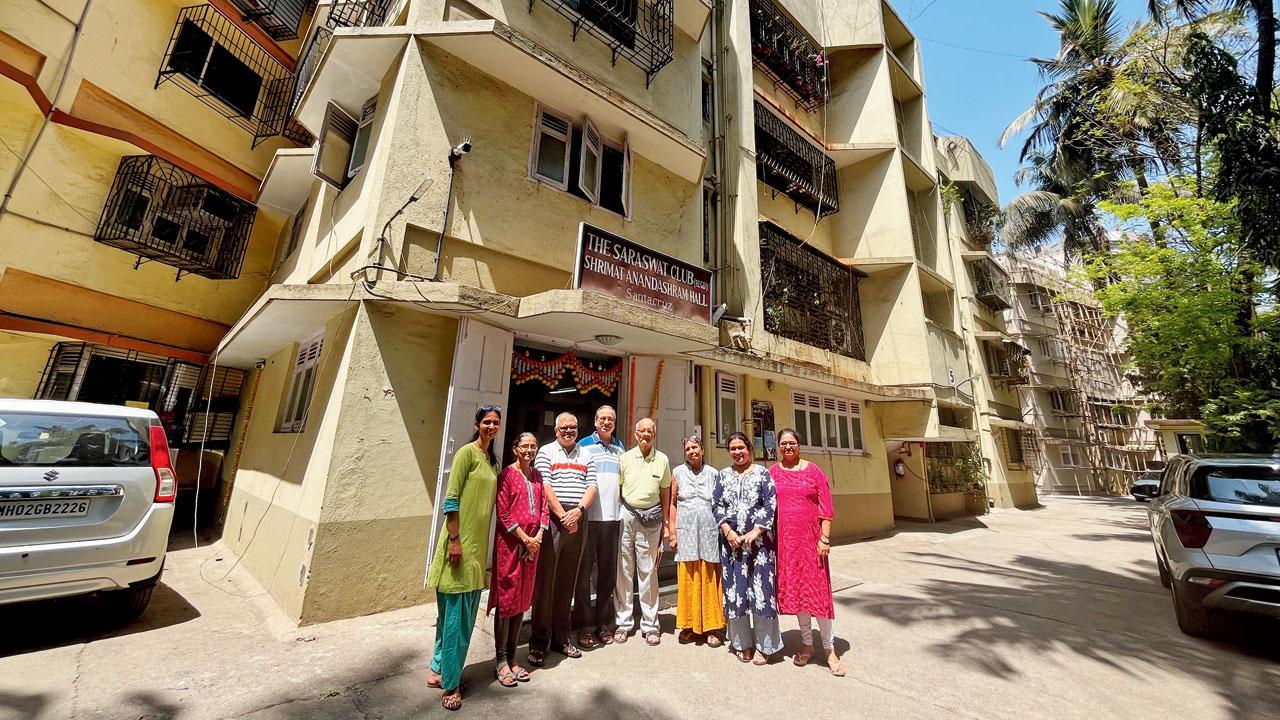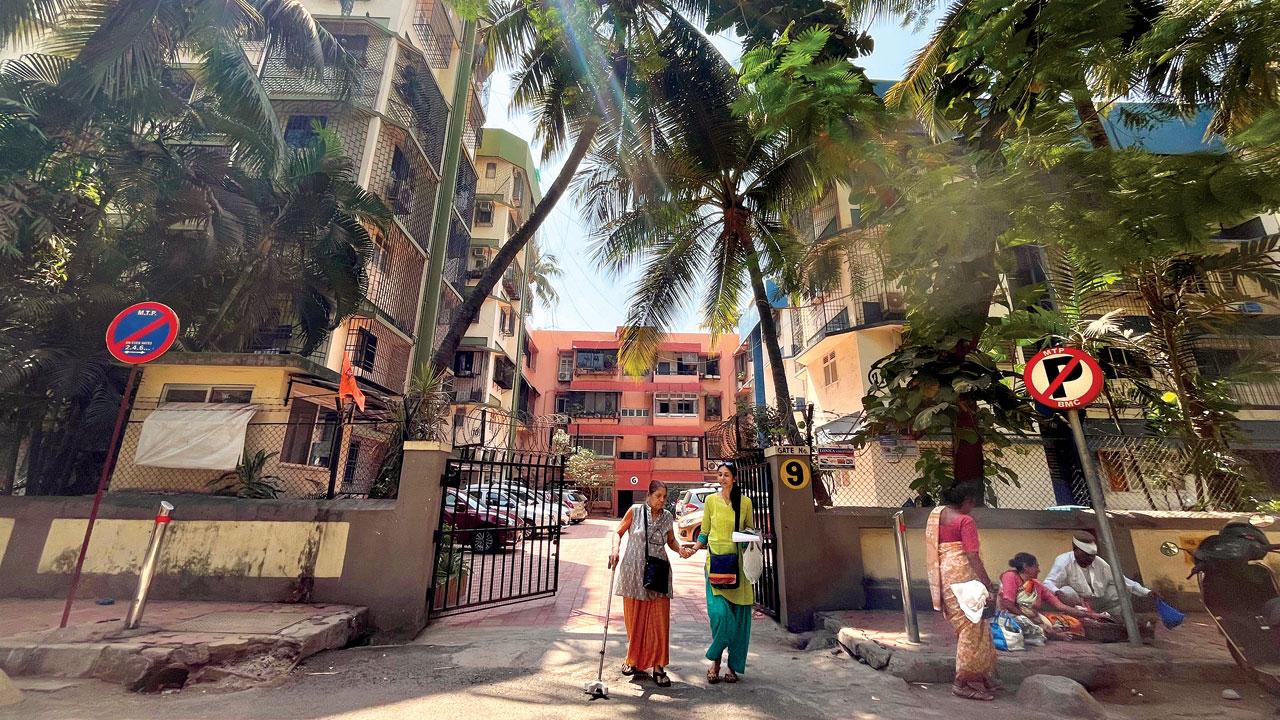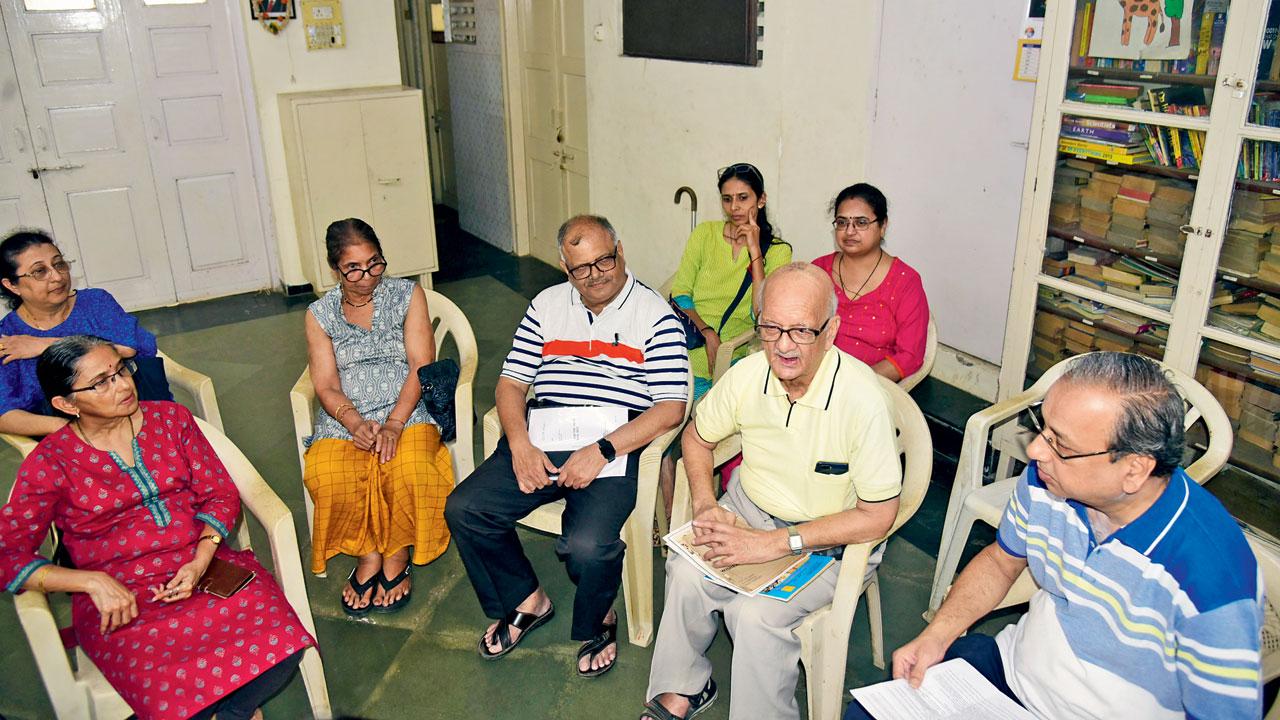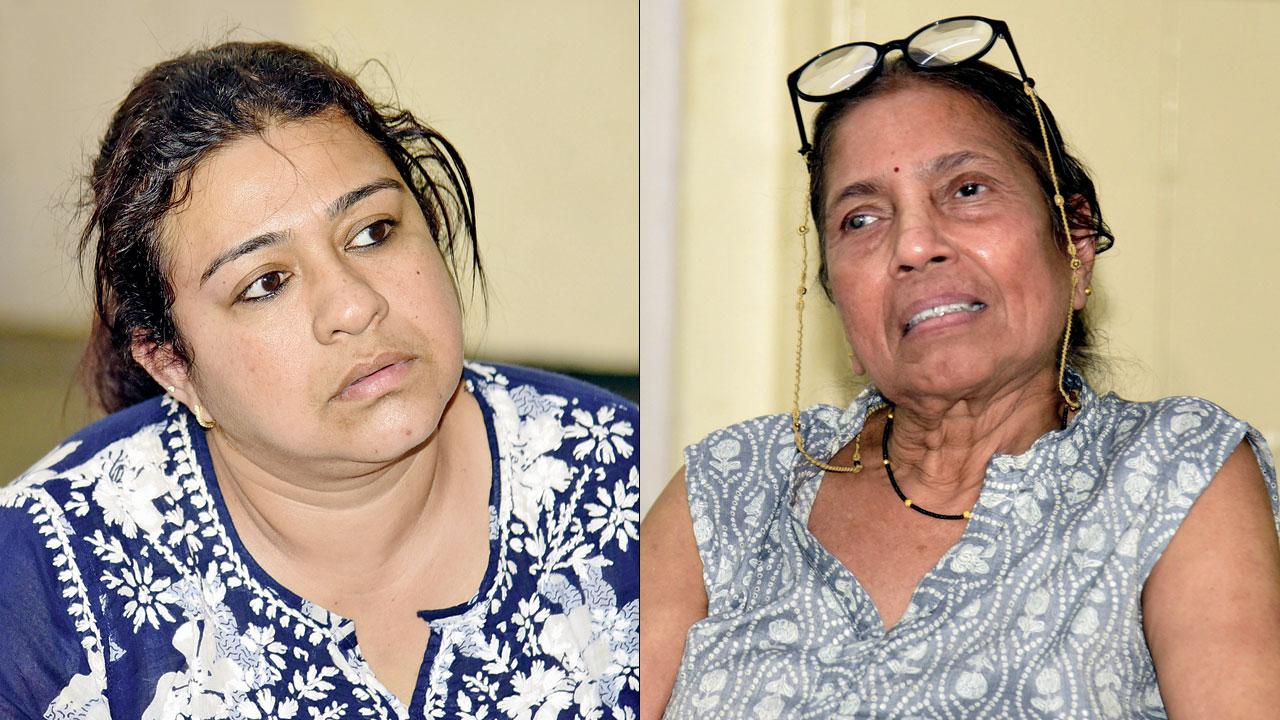Saraswat Club, the social, cultural, religious, and sports hub of one of Asia’s oldest cooperative housing societies, completed its year-long centenary celebrations on the March 10 weekend. All its members want today is that future generations remember their roots

The Saraswat Club completed its 100-year celebrations earlier this month. Pics/Atul Kamble
In a sleepy suburb of Santa Cruz West, a quiet hall nestles among the 16-odd buildings that comprise the Saraswat Suburban Cooperative Housing Society, one of Asia’s oldest cooperative societies. Named the Shrimat Anandashram Hall, it is the hub of the Saraswat Club, the religious-cum-entertainment-cum-sports organising committee of the Chitrapur Saraswat Brahmin colony.
ADVERTISEMENT
“I’ve been associated with the club since my childhood,” says Dr Kishor Nayampalli, convenor and mentor, who used to be the president and now oversees its activities unofficially. Along with 10 other members, the club organises religious and social gatherings for the 180-odd families of the society. The club is a sister institution of the society’s other committees.

The members of the club grew up practising various physical fitness activities, especially lezim and gymnastics. Shankarrao Rakshe, their principal teacher, trained them in various Indian sports
The Saraswat Club was formed in 1923, four years after the housing society was established on March 12, 1919, by Rao Bahadur SS Talmaki, a social reformer and the pioneer of the cooperative society movement in India. Quoting from a Canara Saraswat magazine dating back to 1954, historian Deepak Rao, whose friends and relatives live in the society, says, “At the dawn of the 20th century in India, the idea of a corporate body functioning for the express purpose of providing residential accommodation to its constituents was a novel idea indeed… This society inaugurated the cooperative housing movement in India for the first time. This was a concept unknown to India.”
Originally from Kashmir, the Chitrapur Saraswats migrated southwards and settled in Goa, parts of Konkan, Mangalore, the North and South Canara districts of Karnataka, and Mumbai, where the largest population is concentrated. As a member of the Chitrapur Saraswat Brahmin community, Talmaki, it is said, used to shelter people from the community who migrated to the city. Eventually, the numbers grew, and Talmaki established the Gamdevi society, the first one, in 1915.
The club was set up by the original residents of the Saraswat society, who had a keen interest in cricket and wanted to celebrate the festival of Gokulashtami in a grand manner. In those days, it was known for staging theatre productions and Marathi dramas like Eakach Pyala and Bhav Bhandan. C Soparkar, a physical training teacher, would teach all the children of the colony how to play various sports, including wrestling, kho-kho, kabaddi, and malkhamb. The community grew up learning gymnastics and performing malkamb.

(From left) Members of the Saraswat club, i.e., Shaila Gulvady, Malati Bijoor, Maya Mangalore, Deepak Hemmady, Aparna Betrabet, Aarti Benegal, Kishor Nayampalli, and Ramesh Bijoor, want the younger generation to follow in their footsteps and carry on the community spirit of togetherness
In 1945, Soparkar established a gymnasium. “In those days, it was known as a vyayamshala,” Nayampalli recalls. “It was meant for all types of Indian gymnastics and sports.” Later on, Shankarrao Rakshe, a much-loved personage known as Bhai and Master to the residents who grew up under his athletic tutelage, took over the functioning of the club’s sports activities, for nearly four decades up till the 1990s.
Over its 100-year-history, the club has significant milestones to its credit. In 1927, Rabindranath Tagore visited the colony to address the residents. Among the traditional Indian sports, lezim and malkhamb were the ones that residents really shone in. In 1952, the lezim team represented Maharashtra at the Republic Day Parade held in New Delhi.
Even today, the lezim equipment hangs up in a room of the club’s hall, still shiny. Maya Mangalore, the secretary for religious activities, who trained under “Master”, says the lezim performances used to be full of fervour and energy. “It was an amazing time. Because I learned lezim and other athletics here, I went on to become a gymnastics teacher and taught for 45 years,” she recalls.
Now, though she can’t physically perform, she’s responsible for rounding up the children and training them. “Even when you strike up the drum beats of the lezim today, they are the first to get on their feet!” reminisces Ayesha Kazi, the general secretary. A newly-inaugurated badminton court keeps old and young alike active: which Aparna Betrabet, as the secretary for sports and youth activities, keeps tabs on.
 Ayesha Kazi and Maya Mangalore
Ayesha Kazi and Maya Mangalore
The 100-year-anniversary celebrations have been going on since September last year, starting out with the celebration of Gokulashtami and culminating with a three-day celebration on the March 10 weekend this year. The highlights were a special movie screening and a felicitation of senior members of the community, many of whom hadn’t moved out of their homes in years.
“They had tears running down their face…they hadn’t seen so many of the people in such a long time,” recalls Ramesh Bijoor, the president of the club. Today, the club hopes to encourage the younger generation to connect to their roots, by making them visit their elders on special occasions and offer them bouquets and sweets.
 Subscribe today by clicking the link and stay updated with the latest news!" Click here!
Subscribe today by clicking the link and stay updated with the latest news!" Click here!








